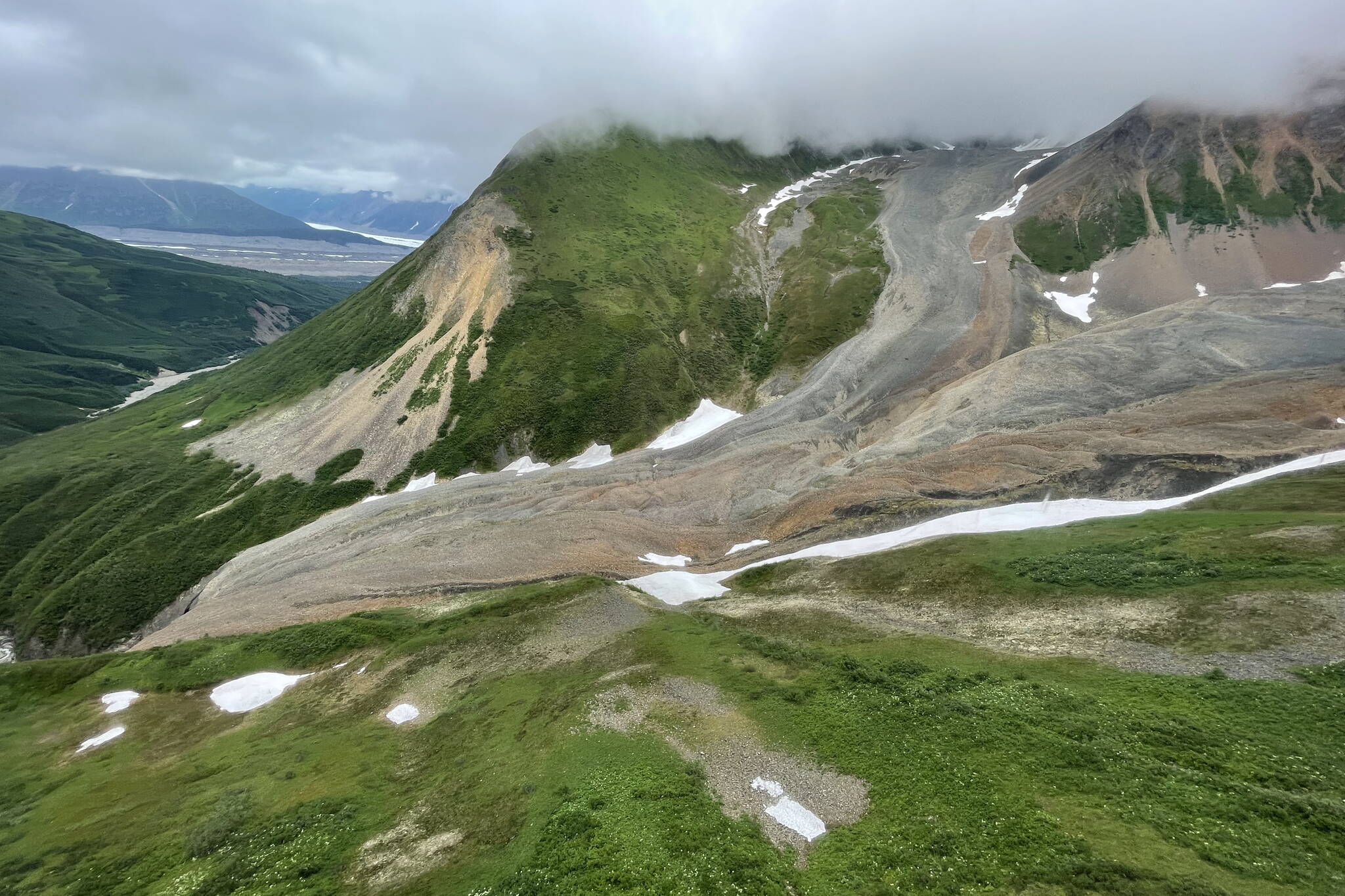The grizzly hadn’t seen my dog or me, so I yelled and waved my arms. The bear stood, looked in our direction for three unforgettable seconds, then trotted up the valley.
Late for a meeting with scientists, I kept hiking in the direction of the bear. A few minutes later, as I clung to a rock wall where the valley narrowed to a canyon, I had a feeling I was being watched. There, staring at me less than 20 feet away, was a glaciologist.
When I could pry my fingers off the rock, I shook hands with Roger Elconin and Adam Bucki. Elconin is an independent researcher who has studied rock glaciers near McCarthy for years. Bucki, a graduate student at the Geophysical Institute, invited me to join them on a rock glacier.
That glacier, named Fireweed, sprawls on the 30-square-mile bulk of Fireweed Mountain near McCarthy. Fireweed rock glacier consists of three lobes of rock merging to become one long tongue. The tip of that tongue broke off in 1993.
Elconin, now of Anchorage but formerly of McCarthy, noticed Fireweed’s clipped tongue as he flew his plane over the rock glacier in August, 1993. Soon after he landed, he hiked to the base of the rock glacier and saw a wall, 300 feet across and 80 feet tall. The wall allows a rare view of a rock glacier’s innards.
A rock glacier is a stream of rocks held together with ice. The glaciers flow down from mountain bowls in colored bands that look like velvet fingers. Rock glaciers are born of rocks that fall from the walls of a cirque — a bowl high in the mountains. When the bowl gets filled up, the mass of rock on top of ice starts to flow.
Most rock glaciers in Alaska creep a few inches downhill each year, but Fireweed flows; it advanced more than 12 feet in one year. Elconin said Fireweed’s movement supports the theory that rock glaciers form independently, after snow glaciers have disappeared. Another theory, now becoming outdated, is that rock glaciers are dying snow glaciers covered with rocks.
Alaska hosts rock glaciers in the Brooks and Alaska ranges and in the Wrangell Mountains. Drivers on the Richardson Highway can see a rock glacier on Rainbow Mountain, highway milepost 207.7.
Elconin and Bucki will occasionally return to Fireweed rock glacier to measure its movement and to determine the mixture of rock and ice in the glacier farther up the mountain. They hope to find out more about the mysterious nature of rock glaciers and how the frozen rivers of rock are affected by changes in Alaska’s climate. They also hope to stay away from bears, which is why they each carry that indispensable research tool, pepper spray.
Note: I wrote this story in 1999, after a visit to Fireweed rock glacier with my dog Jane. A few days ago, 24 years after I last walked there, I revisited Fireweed with Adam Bucki and Martin and Sonja Truffer. Our July 2023 trip will be the subject of next week’s story.
• Since the late 1970s, the University of Alaska Fairbanks’ Geophysical Institute has provided this column free in cooperation with the UAF research community. Ned Rozell is a science writer for the Geophysical Institute.

